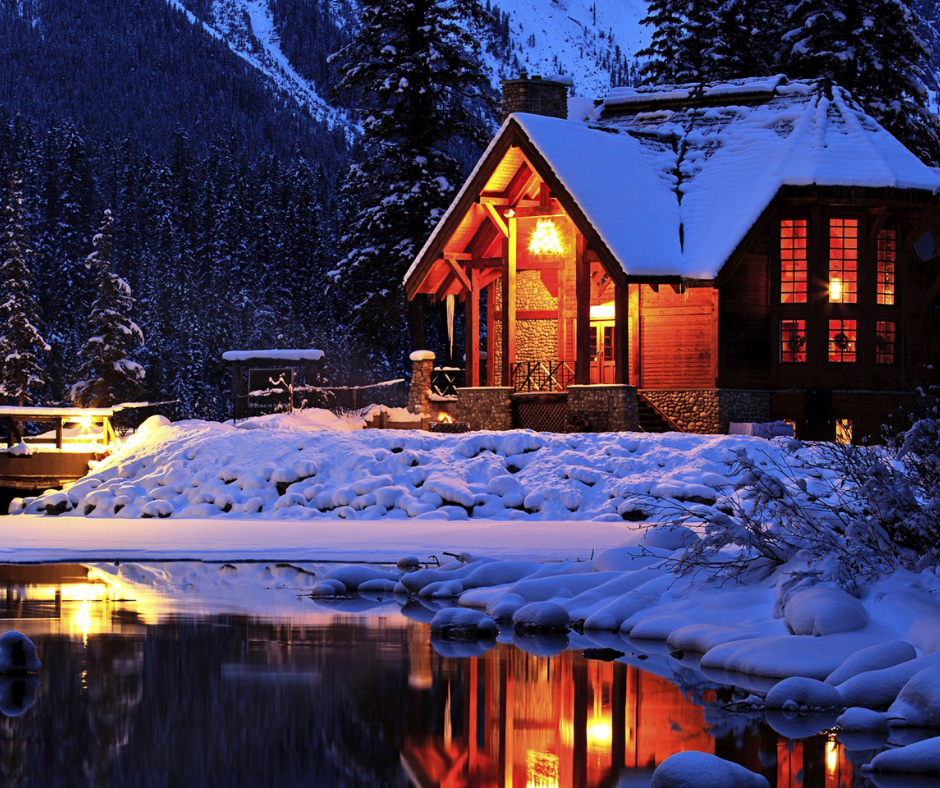Written By: Olivia Forgette
Crisp autumn air swirls outside as color drawn leaves fall from trees. Not only does this seasonal change deliver beautiful surroundings, but it also calls for some extra maintenance from homeowners. With the winter chill right around the corner, look no further to learn some easy tips and tricks on how to prepare your home for the winter months inside and out.
Winter preparation often leads to homeowners questioning landscaping, winterizing, and what to do to best prepare your HVAC system for its long-haul ahead. We have scoured the internet to bring you a comprehensive guide on the best ways you can maintain your property and prepare your home for winter.
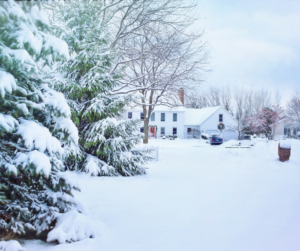
Interior Checklist
When winter is fast approaching, it’s important to prepare your house both inside and out. Check out our top interior tips for preparing your home for winter.
1) HVAC Checks & Maintenance
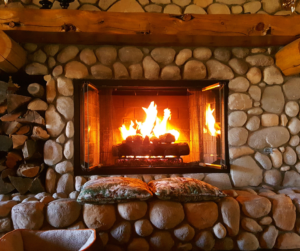
The last thing you want when it’s an icy winter night is for your furnace or heating system to fail. Check out our list of best ways to avoid this pesky winter problem:
- Before the weather turns cold, change out your air filters
- Have your system inspected by a reputable HVAC contractor to check for impending issues
- Know that most heating systems last between 15 and 30 years, so if yours is getting older, think about replacing before you’re left in the cold
- Get your furnace cleaned by a professional once before winter, and once after winter to help improve air quality, and to keep your furnace running efficiently
- An HVAC professional will also check to ensure your furnace and water heater are properly vented, which is a common source of carbon monoxide
- Inspect and clean your vents once every year or two to prevent clogs
- If your heating runs on propane, be sure you have plenty of fuel for the winter months
2) Test Your Smoke & Carbon Monoxide Detectors
Winter is statistically the most common time for house fires to occur, specifically during December and January, according to the Red Cross. Think about how you will be blasting your furnace heating, starting cozy fires in the fireplace, and how you are likely to have the windows closed making carbon monoxide a much larger threat.
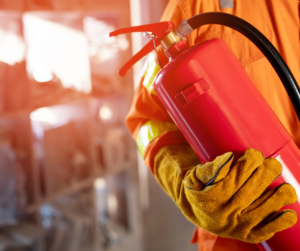
A simple test before the colder months hit can help save you and your family.
Check that batteries are new and fully charged. To run a basic test, press and hold the test button on your smoke detector and your carbon monoxide detector. An alarm will sound. If the sound is weak or does not alert you need to change your batteries or consider replacing the unit if the batteries are already fresh.
3) Check Out The Attic
During the winter months, critters often decide it’s time to look for a place to hide from the cold. It’s important that you check out your attic before the temperatures drop so animals don’t seek refuge in your home. Critters in the attic can cause serious damage to your property, and can also pose some health risks to you and your family.

Check out these tips for ensuring your attic is secure:
- Make sure trees are trimmed and are away from the house
- Ensure that gable vents are sturdy and not damaged
- Take a visual inspection of your soffit and fascia, if there are any holes or damage to these areas repair them before winter (click here to learn how to fix a damaged soffit)
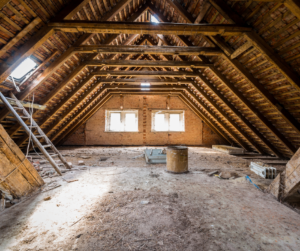
4) Inspect Your Fireplace & Chimney
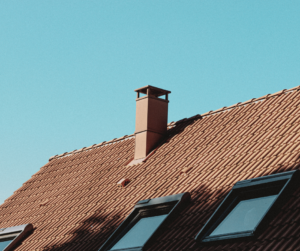
Your chimney and wood-burning fireplace can be a huge culprit for cold air leaks in the winter months. Be sure to clear obstructions (think animal nests or debris), check the damper opens and closes properly, check your chimney draft (learn how here), have your chimney cleaned by a professional chimney sweep, and inspect the brick on the fireplace by looking at mortar joints (if you see a break, have it fixed immediately as this is a common source of house fires).
Exterior Checklist
Getting your home exterior ready for the cold weather is just as important is preparing your home interior. Check out our exterior checklist to ensure your home is prepared for winter.
1) Paint, Caulk, & Seal
Exterior trim can rot easily. To easily prevent this issue, do a visual inspection to ensure you don’t have chipping paint or peeling caulk around your windows and doors. Once rot occurs, it can become an expensive project to replace. If you notice you have any issues, easily touch-up the paint and replace caulk for a tight seal.
2) Clean Your Gutters
Fall often leads to clogged gutters with the extra debris falling off trees. If gutters are clogged it can cause leaks in your attic space, cause deterioration of your foundation, and dangerous icicles in the winter months. To ensure you avoid these issues, clean out your gutters and downspouts.
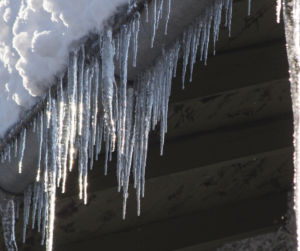
Check out our tips on how to clean your gutters like a pro:
- Prepare yourself by wearing gloves, and long sleeves before cleaning your gutters
- Ensure your ladder is sturdy, and have someone there to spot you while using the ladder
- Purchase a gutter scoop from your local hardware store or try a child’s sand shovel to remove bulky debris first
- Make clean-up easier by placing a plastic tarp on the ground or containing the muck in a bucket
- Once the major debris is cleared, finish the job by running water through the gutters and downspouts with a garden hose
3) Inspect Your Roof
Winter months come with a lot of added precipitation. You certainly don’t want to find out you have a leak in the roof after a heavy snowfall while there is a big drippy mess outside. Do a visual inspection to identify any potential issues.
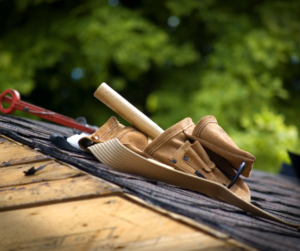
- Look for cracked caulk or rust on the flashing
- Check for shingles that are buckling, curling, or missing
- Inspect for broken shingles
- Look at the rubber boots around vent pipes to ensure there is no cracking
- Check for moss build-up or algae, which can signify rot underneath
If you notice you have any of these issues, it’s best to call a professional roofing expert to make the necessary repairs.
4) Insulate & Fix Drafts
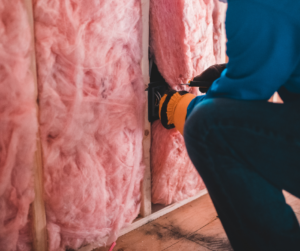
Winter drafts and air leaks drive up energy bills and can kill your cozy vibe inside your home. According to EnergyStar, 9-out-of-10 homes in the United States are under-insulated. Sealing air leaks and adding necessary insulation to your home are the easiest ways to make your space more energy efficient.
- Replace weather stripping to cut down on drafts
- Seal around your windows inside to limit air leaks (check out a variety of ways to do this here)
- Add insulation to your attic space or wherever else is needed to ensure warmth inside
5) Prepare Landscaping
Preparing your landscaping in the fall to get ready for winter is always smart and shows forward thinking as a homeowner.
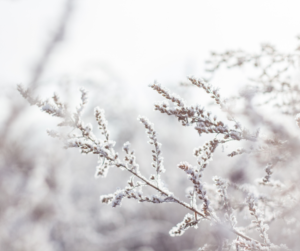
Check out our list of the best ways to get your exterior landscaping ready for winter:
- Trim overgrown trees and shrubs back from the house and electrical wires to prevent icy branches from causing damage or power issues
- Aerate your lawn and apply winter fertilizer to ensure your lawn will be looking its best in spring
- Be sure the dirt grade around your foundation slopes away from the home to avoid flooding or foundation issues
- Clean patio furniture and protect with a furniture cover for winter
- Remove soil from planters and bring delicate pots inside to avoid cracking during the cold weather
- Detach and store any garden hoses and wrap outside faucet with covers to prevent damage
- Shut off exterior faucets and drain water from outdoor pipes to prevent freezing and pipe bursts
- Tidy leaves and pine needles from your deck and driveway to reduce mold and mildew growth
- Trim back any perennial plants to ensure fresh growth in the spring
We hope you now feel more prepared than ever to get your home ready for winter. With these easy tips and tricks, you will be prepared for icy winter frost and chilly frigid nights. If you want some extra information on preparing your home for winter, or you’re looking to buy or sell your property, contact Maureen Forgette today!

